- Importance of proper feeding
- Nutrient requirements
- Benefits of proper feeding
- Feeding methods
- Conclusion
- Preparing seedlings for planting
- 1. Harden off the seedlings
- 2. Prepare the planting area
- 3. Transplant the seedlings
- 4. Provide ongoing care
- Necessary nutrients for seedlings
- Choosing the right fertilizer
- Type of fertilizer
- Macronutrient balance
- Slow-release vs. quick-release fertilizers
- Application method
- Additional considerations
- Application Techniques
- 1. Broadcasting
- 2. Banding
- 3. Foliar Spraying
- 4. Drenching
- 5. Incorporating
- Timing of feeding
- Feeding before planting
- Frequency of feeding
- Transition to outdoor feeding
- Avoiding overfeeding
- 1. Use the right amount of fertilizer
- 2. Use a balanced fertilizer
- 3. Apply fertilizer at the appropriate time
- 4. Monitor the seedlings’ response
- 5. Leach excess nutrients
- 6. Consider organic alternatives
- Benefits of proper feeding
- “Question-Answer”
- When should I start feeding seedlings before planting in the ground?
- What type of fertilizer should I use to feed seedlings?
- How often should I feed seedlings before planting in the ground?
- Can I use compost to feed seedlings?
- What are some signs that seedlings are not getting enough nutrients?
- Can I overfeed seedlings?
- What other factors should I consider when feeding seedlings before planting in the ground?
- “Video” This Fertilizer Is My SECRET WEAPON For A Healthy Productive Garden!
When it comes to gardening, ensuring the health and vitality of seedlings is crucial for successful plant growth. One often overlooked step in the gardening process is feeding seedlings before planting them in the ground. While many gardeners focus on providing adequate watering and sunlight, providing the right nutrients to seedlings is just as important. In this article, we will explore the importance of properly feeding seedlings and the benefits it can have on their overall growth and development.
Feeding seedlings before planting helps to fortify their root systems and prepare them for the challenges they will face once they are transplanted into the ground. The nutrients obtained from the soil can be limited, especially in new or poorly conditioned garden soil. By providing seedlings with a boost of nutrients prior to planting, they are better equipped to establish themselves and absorb the nutrients they need for healthy growth.
One effective way to feed seedlings is by using a balanced liquid fertilizer. These fertilizers contain a combination of essential nutrients, such as nitrogen, phosphorus, and potassium, which are necessary for proper plant development. Dilute the fertilizer according to the instructions on the packaging and apply it to the soil around the base of each seedling. This ensures that the nutrients are readily available to the roots and can be easily absorbed.
Note: It’s important to remember that different plants have different nutritional needs. Research the specific needs of the seedlings you are growing and choose a fertilizer that is appropriate for their requirements.
Properly feeding seedlings before planting is a crucial step that should not be overlooked. By providing them with the necessary nutrients, seedlings are more likely to establish themselves in the ground and thrive throughout their growth cycle. Don’t forget to give your seedlings the best chance for success by feeding them properly!
Importance of proper feeding
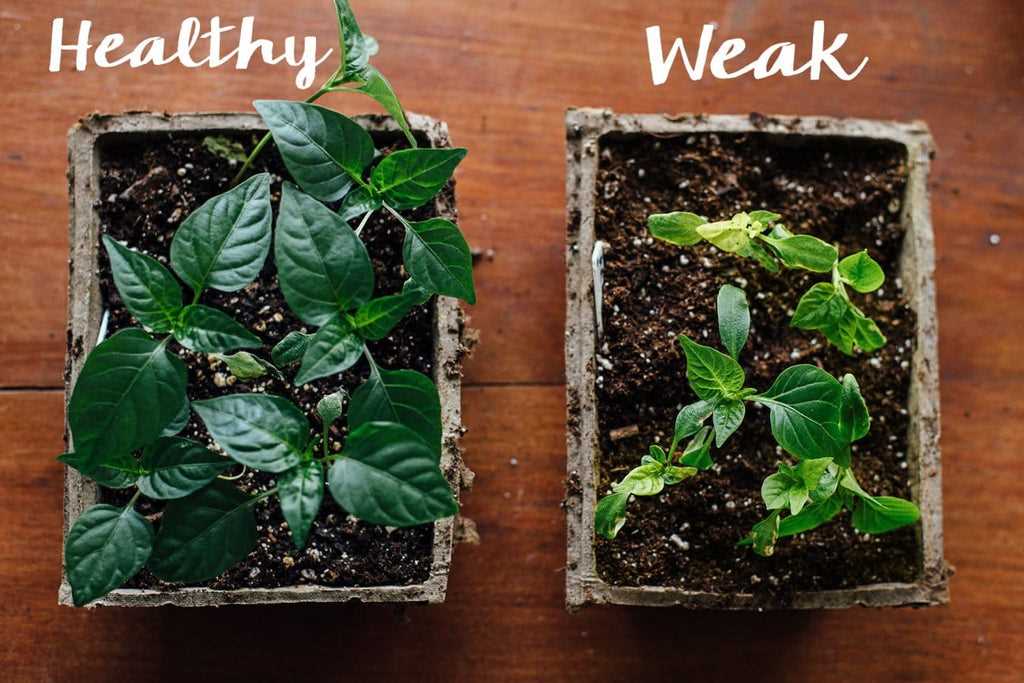
Proper feeding is essential for the healthy growth and development of seedlings. When seedlings are fed with the right nutrients, they are better equipped to withstand environmental stresses, resist diseases, and produce higher yields.
Nutrient requirements
Seedlings have specific nutrient requirements that vary throughout their growth stages. During the initial stages, seedlings need higher levels of nitrogen for leaf development. As they mature, they require more phosphorus and potassium for root and flower development.
Providing the right balance of macronutrients and micronutrients ensures optimal growth and prevents nutrient deficiencies or excesses. Macronutrients such as nitrogen, phosphorus, and potassium are needed in larger quantities, while micronutrients like iron, manganese, and zinc are required in smaller amounts.
Benefits of proper feeding
- Faster growth: Proper feeding encourages faster growth, allowing seedlings to reach their full potential quickly.
- Higher yields: When seedlings receive the necessary nutrients, they are more likely to produce abundant crops or flowers.
- Disease resistance: Well-fed seedlings are less susceptible to diseases and are better able to defend against pests and pathogens.
- Stress tolerance: Properly fed seedlings are more resilient to environmental stresses such as drought, heat, or frost.
- Healthy development: Good nutrition helps seedlings develop strong roots, stems, and leaves, ensuring their overall health and vigor.
Feeding methods
There are various feeding methods to ensure proper nutrition for seedlings. These include:
- Fertilizer application: Fertilizers can be applied directly to the soil or used as foliar sprays to provide essential nutrients.
- Compost or organic matter: Adding compost or organic matter enriches the soil and releases nutrients gradually over time.
- Slow-release fertilizers: These fertilizers release nutrients slowly, providing a steady supply of nutrients to the seedlings.
- Top dressing: Top dressing involves placing a layer of nutrient-rich material on the soil surface, ensuring nutrients are readily available to the seedlings.
Conclusion
Proper feeding is crucial for the successful growth and development of seedlings. By providing the right nutrients at the right time, seedlings can thrive, resulting in healthier plants, higher yields, and better overall garden or crop production.
Preparing seedlings for planting
Properly preparing your seedlings for planting is a crucial step in ensuring their success in the ground. By following these steps, you can help your seedlings establish strong roots and grow into healthy, productive plants.
1. Harden off the seedlings
Before transplanting your seedlings, it is important to harden them off. Hardening off is the process of gradually exposing the seedlings to outdoor conditions, such as sunlight, wind, and temperature fluctuations. This helps them adjust to the harsher conditions they will face in the garden.
To harden off your seedlings:
- Start by placing your seedlings in a shaded area outdoors for a few hours a day. Gradually increase the amount of time they spend outside over the course of a week.
- Expose them to direct sunlight for short periods of time, gradually increasing the duration each day.
- Once your seedlings have been hardened off, they will be ready for transplanting.
2. Prepare the planting area
Before planting your seedlings, make sure to prepare the planting area properly. This involves the following steps:
- Clear any weeds or debris from the planting area to minimize competition for nutrients and resources.
- Loosen the soil with a garden fork or tiller to improve drainage and promote root growth.
- Amend the soil with organic matter, such as compost or well-rotted manure, to improve fertility and nutrient availability.
3. Transplant the seedlings
When transplanting your seedlings, it is important to handle them with care to avoid damaging their delicate roots. Follow these steps for successful transplanting:
- Water the seedlings thoroughly before transplanting to help the soil hold together around the roots.
- Dig a hole in the prepared planting area that is deep and wide enough to accommodate the roots of the seedling.
- Gently remove the seedling from its container, being careful not to disturb or break the roots.
- Place the seedling in the hole, making sure the top of the root ball is level with the surrounding soil.
- Backfill the hole with soil, firming it gently around the roots to eliminate air pockets.
- Water the seedling immediately after transplanting to help settle the soil and promote root establishment.
4. Provide ongoing care
After transplanting, it is important to provide ongoing care to ensure the health and success of your seedlings. This includes:
- Watering regularly, especially during dry periods, to keep the soil moist but not waterlogged.
- Applying mulch around the seedlings to conserve moisture, suppress weeds, and regulate soil temperature.
- Monitoring for pests and diseases, and taking appropriate action if necessary.
- Providing support, such as stakes or cages, for plants that require it.
- Fertilizing as needed, using a balanced organic fertilizer to provide essential nutrients.
By properly preparing your seedlings for planting and providing them with the care they need, you can increase their chances of thriving in the garden and producing a bountiful harvest.
Necessary nutrients for seedlings
Proper nutrition is crucial for the healthy growth and development of seedlings. Providing them with the necessary nutrients will help establish a strong root system, promote vigorous growth, and ensure their overall health. Here are some essential nutrients seedlings need:
Nitrogen: Nitrogen is essential for leaf and stem growth. It helps seedlings produce chlorophyll, an important pigment for photosynthesis. Nitrogen can be provided through organic fertilizers, such as compost, or synthetic fertilizers specifically formulated for seedlings.
Phosphorus: Phosphorus is necessary for root development, flowering, and fruiting. Seedlings require phosphorus for energy transfer and nutrient uptake. Adding bone meal or rock phosphate to the soil before transplanting can provide a good source of phosphorus.
Potassium: Potassium plays a key role in overall plant health and disease resistance. It helps seedlings with water regulation, photosynthesis, and nutrient absorption. Potassium can be supplied through potash fertilizers or by adding wood ashes to the soil.
Calcium: Calcium is important for strong cell walls and preventing diseases such as blossom end rot in tomatoes. Adding crushed eggshells or agricultural lime to the soil can provide calcium for seedlings.
Magnesium: Magnesium is an essential component of chlorophyll and plays a vital role in photosynthesis. It can be provided through Epsom salt, which is rich in magnesium. Dissolve Epsom salt in water and apply it to the seedlings periodically.
It’s important to note that each type of plant may have specific nutrient requirements. It’s recommended to research the specific needs of the plants you’re growing and adjust the nutrient levels accordingly. A soil test can also be helpful in determining nutrient deficiencies or imbalances.
| Nutrient | Deficiency Symptoms |
|---|---|
| Nitrogen | Pale or yellowing leaves |
| Phosphorus | Stunted growth and purplish leaves |
| Potassium | Leaf margins turning brown |
| Calcium | Blossom end rot in tomatoes |
| Magnesium | Yellowing of older leaves |
By ensuring your seedlings receive the necessary nutrients, you can give them the best start possible and increase their chances of thriving once transplanted into the ground. Remember to follow the recommended guidelines for fertilization and monitor the health of your seedlings regularly.
Choosing the right fertilizer
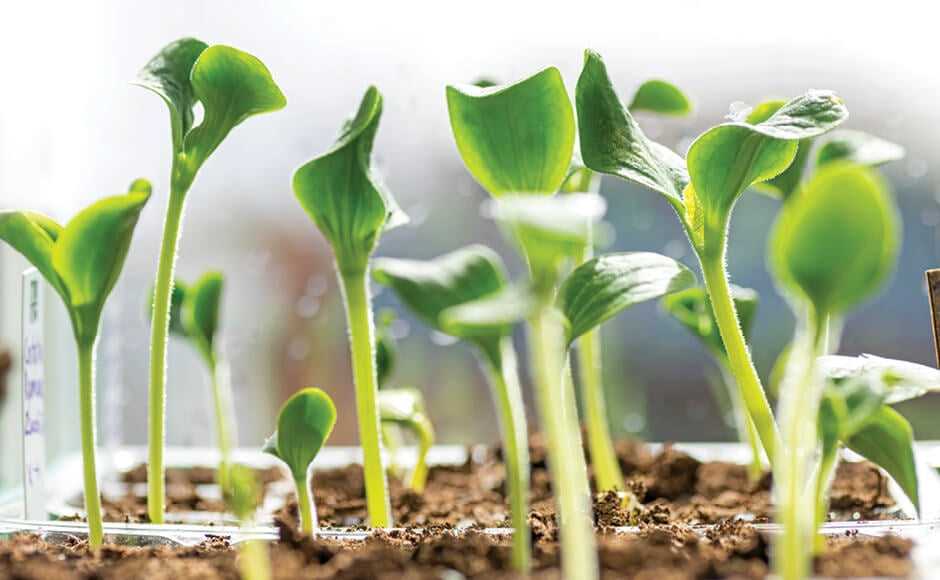
Properly feeding your seedlings before planting them in the ground is crucial for their healthy growth. One important step in this process is choosing the right fertilizer. There are several factors to consider when selecting a fertilizer for your seedlings.
Type of fertilizer
There are many different types of fertilizers available, including organic and synthetic options. Organic fertilizers are derived from natural sources, such as compost or manure, and are better for the environment. Synthetic fertilizers, on the other hand, are chemically formulated and provide more immediate results. Consider your personal preferences, as well as your specific gardening goals, when deciding between organic and synthetic fertilizers.
Macronutrient balance
Seedlings require a balanced supply of macronutrients for healthy growth. The three primary macronutrients are nitrogen (N), phosphorus (P), and potassium (K). Nitrogen promotes leaf and stem growth, phosphorus supports root development, and potassium helps with overall plant vigor. Look for fertilizers that have a balanced ratio of these macronutrients, such as a 10-10-10 or 5-10-5 formulation.
Slow-release vs. quick-release fertilizers
When choosing a fertilizer for your seedlings, consider whether you want a slow-release or quick-release option. Slow-release fertilizers provide a steady supply of nutrients over a longer period of time, reducing the risk of overfertilizing or burning the plants. Quick-release fertilizers, on the other hand, provide nutrients more rapidly but may require more frequent applications. Decide based on your personal preference and the specific needs of your seedlings.
Application method
Consider the application method that works best for your seedlings. Some fertilizers are designed to be mixed into the soil before planting, while others can be applied as a liquid solution to the roots or leaves of the plants. Choose a fertilizer that aligns with your preferred application method and follow the manufacturer’s instructions for proper use.
Additional considerations
Before selecting a fertilizer, consider any additional factors that may impact your choice. These can include the pH level of your soil, the specific nutrient requirements of your seedlings, and any environmental concerns you may have. Conduct a soil test and research the nutritional needs of your seedlings to ensure that you choose the right fertilizer for optimal growth.
By carefully considering these factors, you can choose the right fertilizer for your seedlings and set them up for success once they are transplanted into the ground.
Application Techniques
When it comes to feeding seedlings before planting them in the ground, there are several application techniques you can use. Choosing the right technique will depend on the type of fertilizer you are using and the specific needs of your seedlings.
1. Broadcasting
The broadcasting technique involves spreading the fertilizer evenly over the entire area where the seedlings are located. This can be done by hand or using a spreader tool. Broadcasting is a good option for larger areas with evenly spaced seedlings.
2. Banding
Banding is a technique where the fertilizer is applied in a narrow band directly around the base of each seedling. This ensures that the fertilizer is concentrated near the roots, where it can be absorbed more efficiently. Banding is ideal for seedlings that are planted in rows with adequate spacing.
3. Foliar Spraying
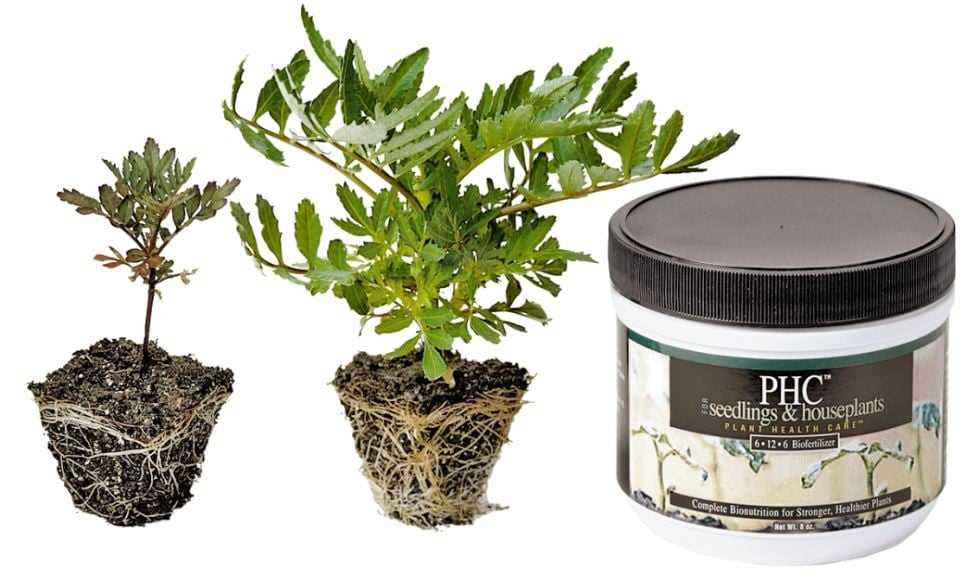
Foliar spraying involves applying a fertilizer solution directly onto the leaves of the seedlings. This technique allows the seedlings to absorb the nutrients through their foliage. Foliar spraying is beneficial when there are nutrient deficiencies or when the seedlings require a quick boost of nutrients.
4. Drenching
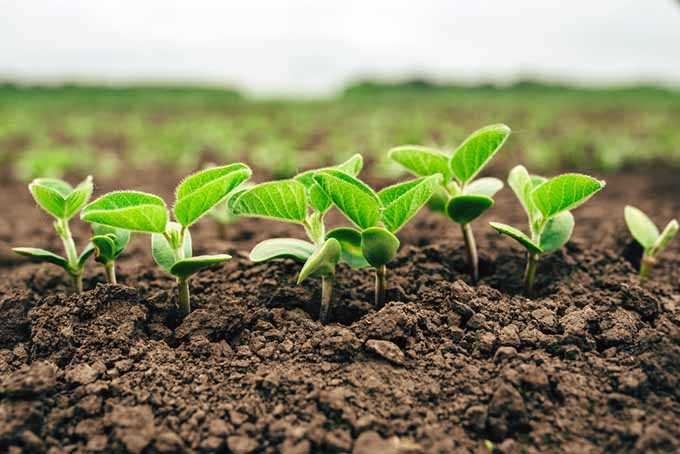
Drenching is a technique where the seedlings are soaked in a diluted fertilizer solution. The seedlings are placed in a container with the solution for a specified amount of time, allowing their roots to absorb the nutrients. Drenching is useful for seedlings that are not yet planted in the ground or for seedlings that require a higher concentration of nutrients.
5. Incorporating
Incorporating involves mixing the fertilizer into the soil before planting the seedlings. This ensures that the nutrients are evenly distributed throughout the soil, providing a consistent supply of nutrients to the seedlings as they grow. Incorporating is recommended for seedlings that will be planted directly in the ground.
It is important to follow the instructions provided by the fertilizer manufacturer for the specific application technique you choose. This will ensure that the seedlings receive the correct amount of nutrients and avoid any potential damage from over-fertilization.
Timing of feeding
Feeding seedlings at the right time is crucial for their healthy growth and development. It is important to provide them with the necessary nutrients to ensure they have a strong start before being transplanted into the ground.
Feeding before planting
Seedlings should be fed a few weeks before they are ready to be planted in the ground. This allows them to absorb the nutrients and establish a strong root system. It is recommended to start feeding seedlings once they develop their first set of true leaves.
When choosing a fertilizer, opt for a balanced one that contains equal amounts of nitrogen, phosphorus, and potassium (N-P-K). This will provide seedlings with the necessary nutrients for healthy growth.
Frequency of feeding
Seedlings should be fed every one to two weeks during their growth period. This regular feeding ensures they receive a constant supply of nutrients needed for optimal development.
It is important to follow the instructions on the fertilizer package regarding the amount of fertilizer to use. Overfeeding can harm seedlings, so it’s better to err on the side of caution and use less than recommended if unsure.
Transition to outdoor feeding
Before transplanting seedlings into the ground, it is advisable to gradually transition them to outdoor feeding. This can be done by reducing the frequency of feeding in the weeks leading up to transplantation and allowing the seedlings to adjust to the natural soil conditions.
Once the seedlings are planted in the ground, they will continue to need proper feeding. Regular watering and occasional supplemental feeding with organic fertilizers or compost can help sustain their growth and provide them with the necessary nutrients.
Overall, the timing of feeding is an essential step in the care of seedlings. By providing them with the right nutrients at the right time, gardeners can ensure their seedlings develop into healthy, thriving plants.
Avoiding overfeeding
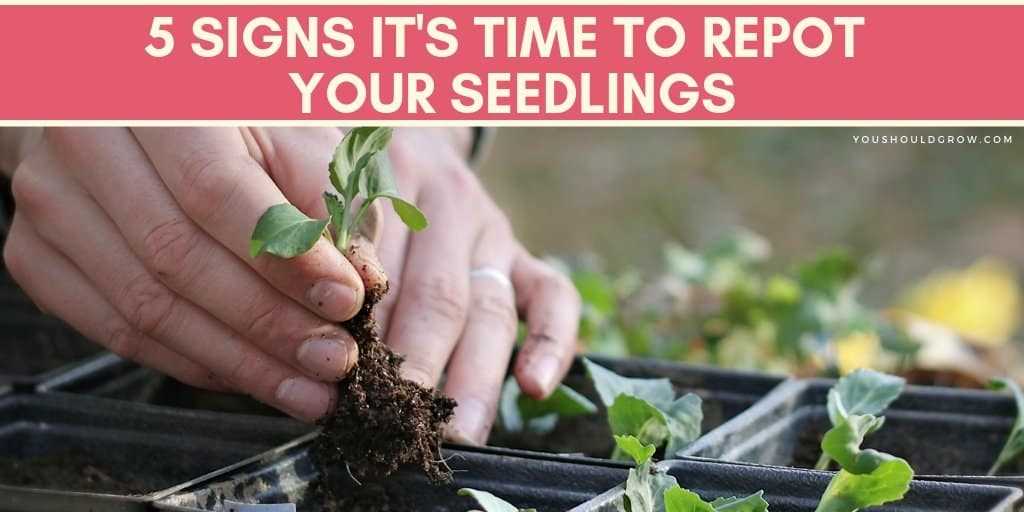
While it is important to provide proper nutrients to seedlings before planting, it is equally crucial to avoid overfeeding. Overfeeding seedlings can lead to a range of problems, including stunted growth, root burn, and nutrient imbalances. Here are a few tips to help you avoid overfeeding:
1. Use the right amount of fertilizer
Follow the instructions on the fertilizer packaging to determine the correct amount to use. It is essential to measure accurately and avoid exceeding the recommended dosage. Using too much fertilizer can cause nutrient buildup in the soil and result in nutrient imbalances.
2. Use a balanced fertilizer
Choose a balanced fertilizer that contains essential nutrients in the proper ratios. Avoid using fertilizers with very high concentrations of a single nutrient, as this can lead to imbalances and deficiencies in other nutrients.
3. Apply fertilizer at the appropriate time
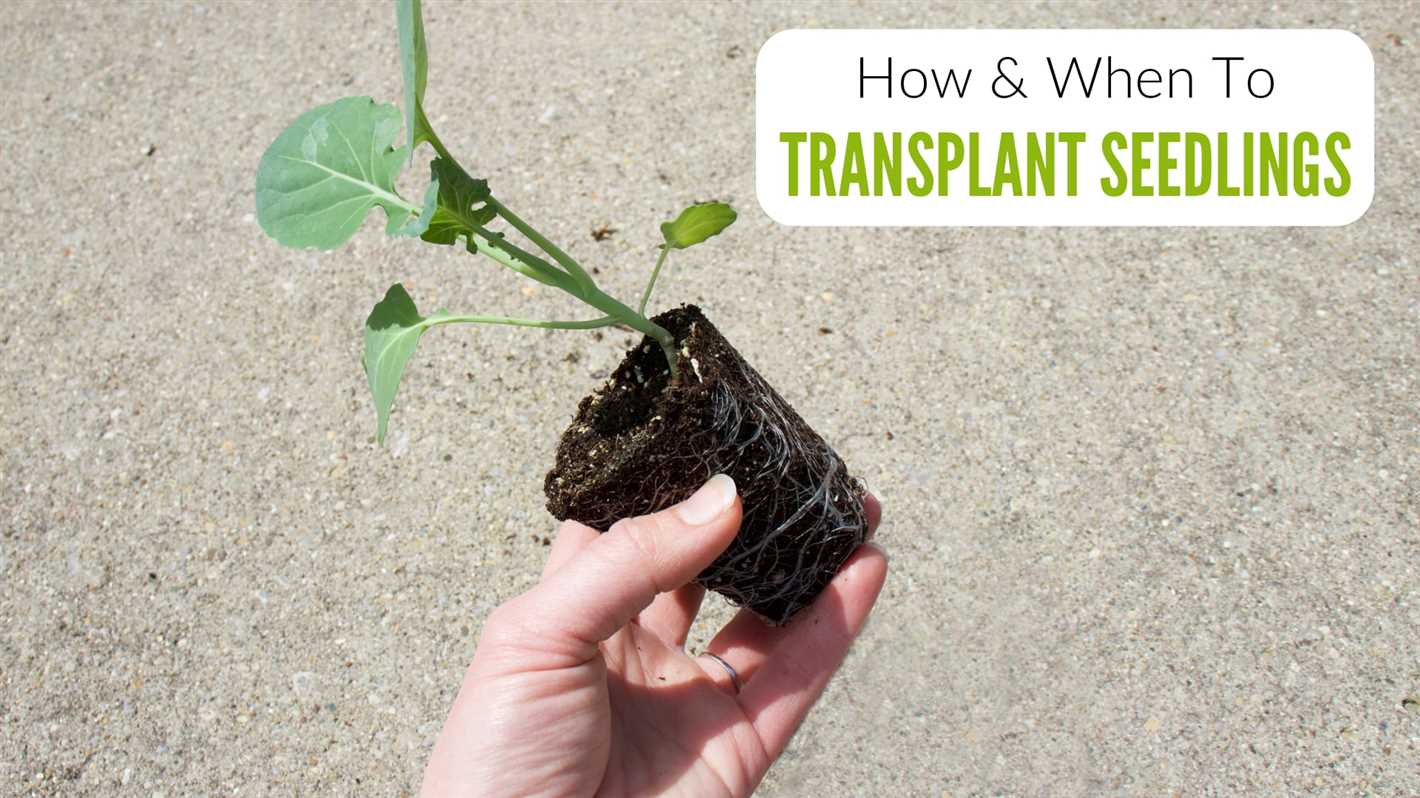
Seedlings have different nutrient needs at different stages of growth. Apply fertilizer when the seedlings are actively growing and showing signs of nutrient deficiency. Avoid applying fertilizer too frequently or too early in their growth cycle.
4. Monitor the seedlings’ response
Keep an eye on the seedlings’ growth and overall health. If you notice signs of nutrient deficiency or excess, adjust the fertilizer application accordingly. Pay attention to any changes in leaf color, size, or texture.
5. Leach excess nutrients
If you accidentally overfeed the seedlings, leaching excess nutrients can help prevent further damage. Water the seedlings thoroughly to flush out the excess nutrients from the soil. This can be done by applying water until it drains out the bottom of the container.
6. Consider organic alternatives
If you’re concerned about overfeeding or want to take a more natural approach, consider using organic fertilizers. These fertilizers release nutrients slowly and are less likely to cause nutrient imbalances. They also improve the soil structure and encourage beneficial microbial activity.
By following these tips, you can ensure that your seedlings receive the necessary nutrients without risking overfeeding. Remember, it’s better to provide a balanced and moderate amount of nutrients to promote healthy growth and development.
Benefits of proper feeding
Properly feeding seedlings before planting in the ground can provide several benefits. Here are some of the advantages of providing adequate nutrition to seedlings:
- Healthy growth: Feeding seedlings with the right nutrients helps promote healthy growth. Essential nutrients like nitrogen, phosphorus, and potassium are necessary for the development of strong roots, stems, and leaves.
- Resistance to diseases: Well-nourished seedlings are less susceptible to diseases and pests. By providing the necessary nutrients, seedlings can develop a strong immune system, making them more resistant to infections and other issues.
- Improved transplant success: When seedlings are properly fed before being planted in the ground, they have a higher chance of successful transplantation. Well-fed seedlings are stronger and better equipped to handle the stress and shock of being transplanted into a new environment.
- Enhanced productivity: Adequate nutrition for seedlings can lead to increased productivity. By supplying the necessary nutrients, seedlings can grow into healthy plants that produce more flowers, fruits, or vegetables.
- Faster maturity: Providing the right nutrients to seedlings can help them reach maturity faster. This can be particularly beneficial for vegetable gardens or crop production, as it allows for quicker harvest and turnaround times.
In conclusion, proper feeding of seedlings before planting in the ground offers numerous benefits, including healthy growth, disease resistance, improved transplant success, enhanced productivity, and faster maturity. Investing in the right nutrition for seedlings can result in stronger, more resilient plants that yield better results.
“Question-Answer”
When should I start feeding seedlings before planting in the ground?
It is recommended to start feeding seedlings about two weeks before you plan to transplant them into the ground. This will allow them to establish a strong root system and have enough nutrients for healthy growth.
What type of fertilizer should I use to feed seedlings?
There are different types of fertilizers that can be used to feed seedlings. One option is to use a balanced, slow-release granular fertilizer that is high in nitrogen, phosphorus, and potassium. Another option is to use a water-soluble fertilizer that is specifically designed for seedlings.
How often should I feed seedlings before planting in the ground?
Seedlings should be fed every 1-2 weeks before planting in the ground. This will help ensure that they have a steady supply of nutrients to support their growth. Be sure to follow the instructions on the fertilizer packaging for recommended application rates.
Can I use compost to feed seedlings?
Yes, compost can be used to feed seedlings. It is a natural source of nutrients and can improve the soil structure. Make sure the compost is well-aged and free of any weed seeds or pathogens before using it. You can mix compost into the potting mix or use it as a top dressing around the seedlings.
What are some signs that seedlings are not getting enough nutrients?
If seedlings are not getting enough nutrients, they may exhibit signs such as stunted growth, pale or yellow leaves, and overall weakness. The leaves may also start to curl or wilt. It is important to address nutrient deficiencies as soon as possible to prevent further damage to the seedlings.
Can I overfeed seedlings?
Yes, it is possible to overfeed seedlings. Overfeeding can lead to nutrient burn, where the roots are damaged by high concentrations of fertilizer. This can hinder the growth of the seedlings and even kill them. It is important to follow the instructions on the fertilizer packaging and avoid applying too much fertilizer.
What other factors should I consider when feeding seedlings before planting in the ground?
In addition to feeding seedlings with the right nutrients, it is important to consider factors such as proper watering, adequate sunlight, and appropriate temperature and humidity levels. These factors play a crucial role in the overall health and development of seedlings.







